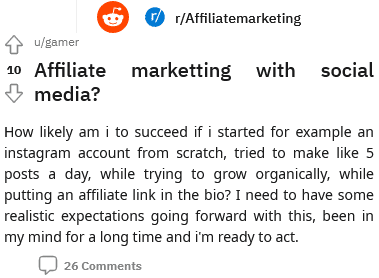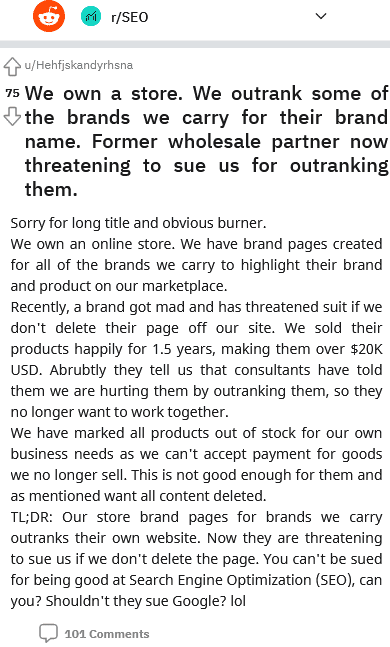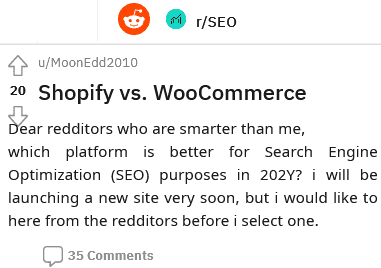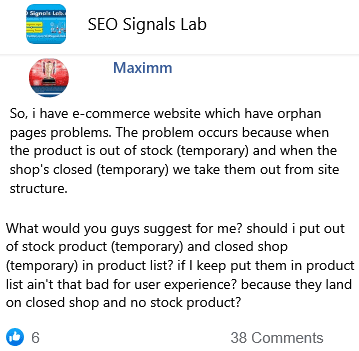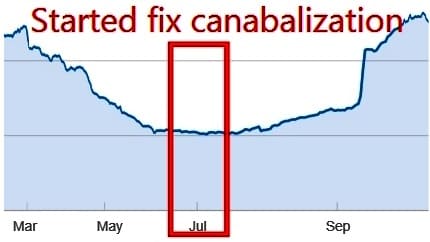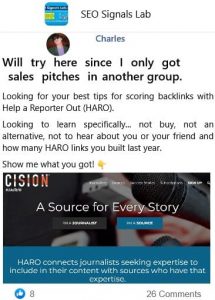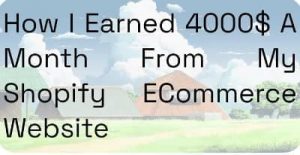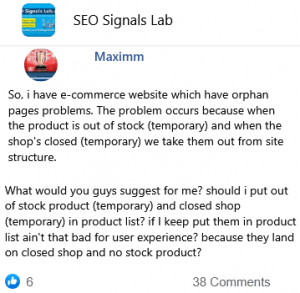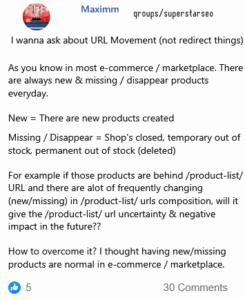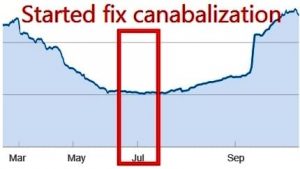Discussion 2: 8-Figure E-commerce Business
Scaling to 8-Figures: This Is How We Delegate
Hello everyone,
My name is Mike and I have spent the last 4 years managing and growing an e-commerce business from 6 to 8 Figures.
The truth is that this Reddit helped me many times in the past – finding answers to my questions, reading inspiring stories, learning from your lessons, …
However, I have never shared a post, I have never left a comment. I just consume the content in silence and I think that many of you can relate (yes, I am talking to you!).
With that being said, I would like to change that and give something back – share a few lessons I have learned over the years in business. I put together this guide that will hopefully benefit you.
Most people start their businesses on their own as solo entrepreneurs. As they quickly max out their hours, they decide to hire a Virtual Assistant (VA) to help them with various tasks. They delegate a bunch of low-level tasks they don't feel like doing and go back to their grind.
I know that because I did the exact same thing. I wanted to grow the business and I did not have time to waste precious hours on hiring and training someone who won't be able to do the job as well as me anyway.
And I managed to do that! The business was growing, I just… needed to work more. My solution? Productivity tricks and hacks! Supplements! And it worked – the business continued to grow for a while. Until it stopped. I was overworked and productivity couldn't save me anymore. Not only I couldn't grow the business, but I also couldn't even sustain it.
I found myself facing a Catch-22. I needed help to run the business, but I did not have the time to find/hire/onboard someone, because I spent ALL of my time running the business… I was in Survival mode, I spent all of my time just to keep the business running at the same level.
Once you find yourself in Survival mode, it is hard to get out. Not only that your business stops growing, but something will eventually break – usually you first and your business next.
—
The go-to solution for most starting entrepreneurs is productivity, they just need to get done more things, right? The thing is that we should go after selective efficiency, not mass productivity. Be aware of the productivity trap – when it only makes you work more.
Commit to putting your company's output first & your productivity second!
How do we put our company's output first? We build a team.
The truth is that most entrepreneurs I talked to are stuck working IN their business instead of working ON their business. Even if they manage to delegate a part of their business, they don't seem to be able to optimize process flows to truly automate (outputs of one process feeding as inputs into the next) – they remain to be the middleman.
… And the problem is that if they stop working, their business stops as well.
The general rule is that an expensive resource (you!) should not do inexpensive work. That means that you need the time and mental capacity to make decisions that add the most value – decisions only you, as an entrepreneur, can make.
You are the captain, you should steer the ship, so why do you scrub the deck?
Here are the 4 key steps to work ON your business:
• Build Process = Create & specify building blocks of your business pipeline
• Find Human Talent = Define your team structure and find a person with high potential & relevant abilities
• Delegate = Proper onboarding methods, set expectations, and clearly transfer process ownership
• Architect: Spend time to envision the possibilities and see the big picture. Loopback to 1
This is Part 1: How to Build a Process. If you guys will be interested I can write down the rest as well. If not, I just wasted 11 hours of my life lol.
—
IntroductionEvery business is different!… Is it?
Your business is a pipeline – with eyeballs on one end and money on the other.
In general, Business is a repeatable process that:
• Value Creation = Creates and delivers something of value…
• Marketing = That other people want or need…
• Sales = At a price they are willing to pay…
• Value Delivery = In a way that satisfies needs and expectations…
• Finance = That the business brings in enough profit to make it worthwhile to continue operation.
What is a process?
"a series of steps taken in order to achieve a particular end"
A well-defined process should have predictable results. Imagine a production line in McDonald's – each and every step is specified in detail to produce the same output. If followed correctly, the result will be the same every single time – no matter who follows the process.
Key components of a well-defined process
Objective = What are we trying to achieve? What is the problem we are solving?
Inputs = What are the inputs we need to perform the steps?
Steps = What are the routines we need to follow?
Outputs = What do we want to create?
Desired Outcome = What is the result?
Going back to our McDonald's example:
Inputs = (List of ingredients), (+ usually time, effort, money, …)
Steps = Recipe to prepare the meal
Output = Big Mac
Desired outcome = Tasty Big Mac burger as advertised, ready in 2 minutes
If our business is a repeatable process, then every part of the business should be a repeatable process as well – in order to create our "pipeline".
Product development? Process. Supply? Process. Marketing? Process. Sales? Process. Once each part of our business is transformed into a process with predictable results, we have a business we can scale since we are able to easily identify bottlenecks.
Why is it important?
I know that this may sound relevant only to people who run a large business, but that is far from the truth. A well-defined process is beneficial even to solo entrepreneurs. Working solo requires you to wear many hats and the best way to keep your focus is to have processes & routines in place.
A well-defined process with detailed Standard Operating Procedures (SOP)s also allows you to hire less experienced labor, therefore saving on Overhead… but more on that later.
If you do not have a process in place, it is not only complicated to hire someone and actually transfer the ownership to them, it is also nearly impossible to:
• Analyze their performance
• Optimize (more on that later)
• Replace them if they are not performing/decide to leave
Imagine a scenario – you finally find someone to manage your supply chain, you train them for 4 months so you can finally focus on your priorities. They decide to leave for some reason and you have to repeat the whole process all over again – wasting a year of your effort.
What if you had a process in place – with instructional videos, checklists, Key Performance Indicators (KPI)s, and workflows. Replacing them would be a matter of a month.
Where to begin?
The most important component of the process is the objective. People tend to overlook this and then wonder why their business pipeline leaks (flow of outputs from one process is not suitable as inputs for the next process).
To define an objective, you need to think deeply about the thing you are trying to achieve. It may be tempting to say that your objective is to get the outputs, but that does not have to be the case!
Here is a brief example:
Let's say you have gained some weight and don't like the way you look… and you do not feel particularly good either.
You decide to go on a strict diet and after 3 months your weight is almost back to normal, but you feel weak and your skin is pale. You don't like the way you look… and you do not feel particularly good either.
This is obviously an extreme example but hopefully explains my point. Was the objective to lose weight or feel and look healthier? Maybe monitoring your weight isn't the best outcome to optimize for. If you would spend more time thinking about the objective, you would realize that the steps to achieve the Desired Outcome were something completely different.
This applies to your business as well.
What is the objective of your customer service? Minimize refund rate? Or use every chance you have to show your customers that you care deeply about their experience with your products?
How to develop Minimum Viable Products (MVP)?
When developing a new process, you need to start with a draft – a minimum viable process.
Every process can (and will) get quite complicated, it is not possible to develop a perfect process from scratch so please, save yourself some time and don't even try it. I know, it can be tempting once you get into it, to try and develop the greatest workflow the world has ever seen, but you will regret it the first time you will try to actually follow it.
Agile Process Development
• Define the objective first = do this properly
• Map out key steps and milestones = even though you do not have the process yet, you should have a rough idea of what needs to be done
• Do the actual work while recording your screen + add steps and inputs you missed with your initial draft
• Be aware of your assumptions = don't expect everyone to be as experienced as you, they may need that one step you have not added because it was "obvious" to you. The same goes for inputs (other documents, source of data, etc.) – you know your business and inputs better than anybody.
• Identify and fill in the gaps as you go = it may take you twice as long to do the work while developing the process at the same time, but you will save a LOT of time in the future
• Once we finish the work, go back to your objective and evaluate whether you achieved it!
BONUS TIP: There already may be a process for the thing you want to do – Search online! You are not the only one with Supply Chain / Sales funnel / Customer service / etc. Save yourself some time – adjusting and optimizing an existing process is always easier than developing a new one from scratch
Integrate with your Project Management software
• ClickUp, Asana, … It does not really matter but make sure to create a template with all the details included
Visualize your process
• Use flowchart software to visualize the process. You do not have to include all of the steps, just the key inputs, milestones, decision points and outcomes (I personally use Miro: https://www.miro.com/ but there are dozens of similar websites for free)
• It is extremely helpful to refer to the process flow during the onboarding phase
• And think about this: If one process feeds to another as it should, you can then visualize your whole business in ONE flowchart, including all the flows, inputs and outputs and everything in between. Now imagine showing that to your investors – they would be able to look "under the hood" and see the magnificent machine you have built
You are building an asset – keep that in mind.
… And now we are getting to the good stuff: Process Optimization
How do I optimize my business?
In general, we can say that the objective of the optimization is to get more output with less input. Or the same output with less input. Or more output with the same input.
Quick example:
You improve our sales call script. The call takes the same time on average, you still need one salesman to perform the call, but you achieve a higher conversion rate = more sales. You now have more Output with the same Input.
Avoid the temptation to get fancy! Keep things simple, it is never going to be perfect. The key to successful optimization is your ability to identify bottlenecks. That is the part of your Business Pipeline that produces Output at a lower rate than the rest requires.
We are going to implement Iteration Cycles with a proper Feedback Loop in order to optimize quickly and efficiently.
Iteration Cycle
• Take a look at our process as a whole (ideally the visual flowchart)
• What could we improve? What are our options?
• Based on our experience with the business, we make an educated guess
• Define the change
• Implement the change
• Measure & evaluate – keep it or drop it, Repeat
Feedback Loop
Once we delegate the process to an employee, we want to make sure that the Feedback Loop is closed, which means that ideally, THEY will be able to tell us what could be improved, what is working, and what is not, showing us the data. Especially as your business grows, you won't be on top of every single process, but your employees should be. Once again, they need to know the Objective and Desired Outcome in order to know what to optimize for.
With time, your iteration cycles should get faster and more accurate. Efficient tweaking will show you the power of aggregation of marginal gains.
—
Well, and that is pretty much the end of the first part. As I said in the introduction, there is a lot more to that, but this would be the first step.
As you can probably tell, I am quite passionate about this topic and I truly find it to be the most valuable lesson I have learned in the past… well, ever.
I would be happy to discuss your experience with Team Management & Delegation, so please let me know your thoughts, you can send me a Direct Message (DM) or leave a comment below.
—
I hope that you found it useful and that once you start implementing it, you will find yourself having more clarity to make the right strategic decisions in your business and more time to pursue things that matters.
Discussion 1: 8-Figure E-commerce Business
Building an 8 figure business in 9 years – Lessons Learned, Frequently Asked Questions (FAQ)s, Big-Ass Brain Dump
Hi, I'm Matt Bertulli and I'm an entrepreneur, angel investor, and now author. I like building sustainable businesses and working with good people.
And while my entrepreneurial journey is far from over, I thought the 9 year mark was as good a time as any to share my story and hopefully some lessons that can help you on your journey. I'll link to a few things below so you can see that I'm a real boy but there's no hidden agenda in the links (read: I have no course to sell you!).
What I'm building (right now):
• item 1 – In < year > I started (and still run) Demac Media, an 8-figure business with close to 100 full time employees
• item 2 – I am the co-founder of Pela Case, a 6-figure, soon to be 7-figure eCommerce brand.
• item 3 – I've made a handful of angel investments over the years into various industries, including eCommerce brands, an alcohol brand (Qui Tequila), and a night club.
• item 4 – I've also decided to do one of the scariest things I've ever done-write my first book called Anything, Anywhere.
It's a weird thing putting your thoughts down in a permanent place (especially something as permanent as an actual book) but while I was spending all that time writing, I started to reflect on how I've gotten to where I am today. A friend of mine suggested that I write a post like this and I had run out of reasons not to!
Also, since I started putting myself "out there" (speaking gigs, medium essays etc) I've been getting questions from all corners of the interwebs and I needed to centralize this stuff so I can point people to one location. So why not Reddit?
PS: I will monitor this thread and answer any questions you might have. So please, ask away!
I've tried to structure this post into one part story, one part lessons learned, and one part common questions with my usual answers (get asked these a lot).
This post is ~5,400 words and my team has told me it's about a 30 minute read…to set your expectations.
The Beginning
I started my career as a self-taught software developer. This was in the mid-90's (I'm 36 now) and to say things were different then would be…well, obvious. I am grateful for having learned to code in the 90's as it gives me great appreciation for how low the barriers have come to get into the craft. Like most, I worked a bunch of different jobs from < year > until < year > before deciding to break out on my own entrepreneurial journey and start Demac Media.
Finding the Gap
I had no business plan. Just a rough idea of what I wanted to do. I was working at Netsuite at the time and saw how much business we referred out to service partners and thought that I'd rather be the guy getting referrals than the guy giving them. It was that simple. I sort of knew that I wanted to focus on eCommerce since I grew up in a multi-generation retail family (selling furniture) and knew the space very well. There was also a serious lack of competition in the Canadian market in < year > as eCommerce had yet to really gain steam with our larger retailers/brands. That's one of the keys to our success, we were early. Probably too early when I look back. But none the less, we don't take it for granted that timing was certainly on our side.
The Accidental Big Business
I also never intended on things getting to this point. After Netsuite I really just wanted something small that made me a decent living and I could call it my own. I just wanted to have fun with work again, so I made the leap and started Demac Media. Many of my first hires will laugh when they read this because I was famous for saying we'd never have more than 15-20 employees…whoops!
As you can tell from the title of this post, it has taken almost a decade to get to where we are. I didn't do it alone, far from it (more on that below). I've had so many helping hands in the form of mentors, partners, friends and customers to count. I learned a great deal of patience over these years and if I could tell my 27 year old self 1 thing it would be this:
** Be patient and always assume you don't know shit…cause you don't. **
Continuous Learning
I'm highly skeptical of most of what I read or hear when it comes to "top X ways to build a million dollar business in 12 months or less". In my experience there are simply too many variables at play for someone to prescribe one way of doing things as THE way to build a great business.
However, I do find other entrepreneurs stories incredibly helpful. I have done especially well with studying a wide variety of industries and stories from within those industries and then applying these lessons to my narrow-focused businesses (eCommerce). I can spend hours a day just reading.
In other words, I go wide in my learning and narrow in my practice.
Let's dig into my biggest lessons learned and I'll sprinkle in more back story as we go.
Lesson 1 – Your network is your net-worth (thank you Jayson Gaignard from Mastermind Talks)
I was fortunate enough to have a pretty decent network early on when we were starting Demac. I give a lot of credit to, and received a lot of value from the early days of Lean Coffee Toronto, a group I was one of the founding members of with the guys from TWG, Bnotions, Jet Cooper and others. We'd meet weekly to talk about all things "Lean Startups" and how they applied to our businesses. Most of us had less than 5 employees at the time, but that peer to peer learning was foundational.
I was new to downtown Toronto when I started Demac so I invested a lot of time into getting involved with the local tech and startup community. While exhausting I met a lot of great friends and even some mentors / advisors through these years of networking marathons. I went into all of this just wanting to find my "people" and didn't realize just how much value would come from these relationships over time.
Another big "network" win for me was getting invited to Mastermind Talks (MMT) in Napa. This is a world class event because the people in attendance are world class. They are some of the most kind and generous humans I've ever encountered and I can honestly say I'm a better entrepreneur and better all around person because of the decision to attend and dig-in/participate.
Through MMT I met an amazing entrepreneur that had a shared passion for mountain biking. He was the one to convince me to join EO (Entrepreneur Network) in < year > by inviting me to meet his forum members (all guy with businesses over 10-15M) in Toronto while they were having their quarterly meeting. Joining this forum turned out to be another major win in equipping me with the tools I need to continue to build and grow businesses.
It was being at MMT that also gave me the kick in the ass I needed to write my book. Meeting so many others that had taken the plunge and were still standing was encouraging. I was scared shitless of putting my name out there in the form of something more permanent (ugh, a book) and while this path has had its own twists and turns I know it was the right one.
My only regret was not investing more aggressively in my network earlier, especially during those early years of starting Demac Media.
TL;DR – Nobody does this shit alone. We all need help and lots of it. Investing in your network is one of the best things you can do if you truly want to build a good business.
Lesson 2 – Build a good business first. Ignore people telling you to dream bigger.
In the early days of Demac we experimented with a bunch of different niches and technologies before settling in on Magento (an eCommerce software platform) and going all-in on eCommerce. One of the best moves we made was formally partnering up with Magento and investing in the platform. Not only did we get to associate our relatively unknown brand with their very well known brand, we also didn't have to worry about building software from scratch and could instead focus on servicing our customers by building on something already established.
I can't stress enough how important that singular focus on one platform was early on. Once we stopped screwing around trying to be everything to everyone, the sales and marketing engine started to really work. I'm now firmly in the differentiate-or-die camp. Services businesses, especially agencies, need to learn this and apply it. If you stand for everything, you stand for nothing.
Targeting a niche definitely narrows your addressable market, but the benefits far outweigh this downside. Doing this likely means you aren't going to build a gigantic company, but who the hell really wants that anyway? Most of us just want a great business that makes profits and affords us the life we desire/design.
I'm a huge supporter of service based businesses. Most will tell you there are lots of reasons these businesses suck, but dig a little deeper and the real reason people speak poorly of service businesses is because "they don't scale". That's not entirely true. They most certainly don't scale the same way that software/product companies do, but to say something doesn't scale is too narrow a statement. Service businesses just scale linearly, largely based on human effort (hours). You can still build a very good business within the constraints of service based business models, so if this is appealing to you go for it. Ignore the people/media/whomever telling you that you have to build something that "scales".
Lesson 3 – Something about Yoda and becoming a master of something…
I also invested a lot of time early on into learning my industry. I'm a little obsessive when it comes to needing to read everything. It drives my wife nuts in our non-business lives since I can go down the rabbit hole on things that sometimes don't matter much. However, in business this has served me well since I'm able to keep up with a rapidly changing retail landscape. I was spending easily 4-6 hours a day in addition to my "job" just reading and making sense of everything I could get my hands on.
Side Note: Identifying that I had a unique ability early on was really important in our hiring strategy. I had received advice from some mentors that I should focus on what I'm uniquely qualified to do and hire people to do the rest. Massive productivity win for people trying to scale human-intensive businesses.
I continue to study retail. When people ask me what I do I sometimes tell them I'm a student of retail, since that's what I feel like most days. While I've been building Demac Media for 8 years, I've spent my entire life in retail in some form or another. It still feels like home to me and even if I weren't running Demac I'd probably keep building retail focused businesses as I get tremendous satisfaction out of helping merchants succeed.
Going narrow and becoming a master of one thing early on can feel really restrictive. I get that. I still think this approach has much higher chances of success than trying to create lots of business or revenue streams or whatever other bullshit [insert cheesy internet marketer here] is selling.
Lesson 4 – The right customers are always right, the rest are…meh.
Key Points:
• item 1 – Listen to your great customers. They provide you invaluable feedback.
• item 2 – Shitty customers are just that, shitty. Life's too short to work with assholes and assholes typically don't bring value to the table.
• item 3 – Our customers hire us for our expertise. Instead of asking our customers what they want us to do, we recommend what should be done. We're the expert, not the customer.
Some of my earliest customers ended up being some of our best customers. I think we got lucky here. I even count a few as personal friends of mine and regularly see these people outside of business. This is something I'm particularly grateful for. I got to sit side by side with some amazing entrepreneurs that have grown retail/eCommerce companies from $0 to mid-8 figures and more. I have experienced almost every aspect of a retail business from the warehouse to customer service and everything in between. This has taken time, but it is paying dividends now (literally and figuratively). Committing to learning a lot about an industry without any immediate return is very, very valuable.
For these customers, I've given up huge amounts of my own time ensuring they get what they need from myself and my team to ensure they are successful. When things are working, we push, when things aren't working, we push. These types of customers are the ones you build great businesses with.
We've also had some duds as customers. All the b1tching and moaning about clients you typically hear from service business owners is true, by on a case by case basis. I feel like I've experienced it all, but know that I probably haven't. Everything from the high profile entrepreneur who changes his mind weekly based on what he reads or hears on a podcast, to the high power Chief Executive Officer (CEO) who "wants a partner" when really just wants a whipping boy to agree with him. Luckily these experiences are not the norm. Most customers we've had just want help with things they don't understand. The very best customers know what they don't know and are experienced enough to trust others to fill in the gaps.
Lesson 5 – Premature action can destroy you.
As we grew the company from 3 of us in my basement to 100 we had to learn all sorts of things we never thought would matter. One of the biggest lessons was around the incalculable value that a great culture adds to a business. In ~9 years we've managed to have a less than 15% employee attrition rate…including people we've had to let go.
The other more difficult lesson that stands out was not being able to keep everyone happy all the time. Both customers and employees. Most mistakes that lead to people being unhappy have to do with doing the right things at the wrong time.
I outline a specific example in Lesson 6 below of the outbound sales machine failures, but there have been countless other instances where we tried to do something before we were ready. Opening in new territories, hiring people too soon (luckily not too many), looking at the wrong data at the wrong time, creating too much process too early and on and on. I feel wiser for it, but this is the shit nobody teaches you that you just wind up having to figure out. There's no 10-step program for this stuff.
Honestly when I think about it, the mistakes we've made could easily fill a book. I'm sure most other entrepreneurs that have been at this a long time would probably say the same thing. Not all mistakes are good so don't set out to "fail". The best mistakes I ever learned from were someone else's!
Lesson 6 – Creating multiple, strong sales channels is how you build leverage, which is a critical component in sustainable growth.
Once we were out of the gate and saw we had a sustainable business I decided to focus on adding in additional sales channels that would help create a little more stability. Depending on one channel to bring in all your revenue is a little scary once that channel gets larger (all eggs, meet 1 basket).
Our partnership with Magento was something I owned and invested a lot of time into. Every time we got a new "partner manager" at Magento I would spend time getting to know them and building that relationship. Now we have a partner (aka – Channel) team that handles these relationships and all of the activities around managing a strong multi-channel business. This investment into a strong channel early on gave us the sales and revenue to invest into other channels that we acquired customers through.
~3 years into the business we started to focus heavily on this new thing that people were calling Inbound Marketing. Shit, we even bought the software (Hubspot) to go along with the buzzword! To date we've published more than 1,100 articles and this is still a major pillar in our marketing engine as our Demac blog gets upwards of 50-60k visitors / mo. Most of that traffic is just coming to us to learn, but it has helped us establish some thought leadership in our industry and that in turn helps us acquire and convert business.
We're now using our partnerships and inbound channels as leverage to create an outbound sales team that goes after our dream list of customers. We have had some failed attempts at creating an outbound team / machine and now that I'm looking back we were simply too early in chasing these. We believe we're ready now, but who knows, maybe I'll be doing another Reddit post in a few years about how we failed here again. (God I hope not)
Lesson 7 – Compounded, steady growth is sanity.
You can double your business by growing 25% / year for 3 years. My desired growth of 25-30% per year seemed painfully slow at first, but compounded over time it made for some pretty significant gains in years 4 through 7.
One of the things I was repeatedly told by my parents and grandparents as they ran their stores was that cash flow was king. This translated into a bunch of different thought tracks for me, but mostly it meant that if I wanted to grow my company I'd have to do so very tactically, which meant calculated growth that wasn't too slow and wasn't too fast so that we best used our cash and didn't run out. We managed to mostly pull this off, with only 2 years in 8 where we went too far in one direction or the other for a variety of reasons. We targeted somewhere in the 25-30% YoY growth range and usually fell into it.
Having grown up in a small family business (our family sold furniture retail) I was no stranger to the ups and downs of this life. I knew there would be tough times. I knew it would take its toll on my family (still does). However, even knowing this and going into it eyes wide open there were still times where I got the wind knocked out of me. Shit, I still have days and sometimes weeks where I ask myself what the f*ck I'm doing with my life. Thankfully I mostly enjoy what I do for a whole variety of reasons and when I spend time thinking about the alternatives I quickly regain focus.
Lesson 8 – Adopt an Operating System
About 1.5 years ago we started to adopt Traction / EOS (look it up) and it has been a game changer in helping us achieve operational scale to match our sales and revenue scale. This is another thing I would stress to my younger self. Sheer force-of-will is what got the company to 5M+. Having an operating system that everyone in the business is using is what is taking us further.
Around the same time (2 years ago) we also started to invest in what buzzword business folks like to call "senior leadership". There were a number of reasons for this, but mostly it had to do with me needing to focus on wearing 1 hat instead of 5. I couldn't effectively lead/steer the ship if I was stuck in the weeds and I needed help if I was going to get out. We formalized an exec team at this point and they are the fine folks who run the company day to day now while I focus on where the group of companies is going.
Implementing EOS/Traction with the team in place was painful but ultimately I think it will be one of our best moves yet. Having our entire company learn this new operating system together is allowing us to all to support one another, even though it sometimes feels a little pointless.
Part of EOS/Traction is having what is called a Vision-Traction Organizer (VTO). The basic idea is that it is a one page document that helps clarify your 3 year vision for your business. It is a great tool to help you achieve alignment in your teams. Ours has us continuing to grow Demac while also building out some additional products and business lines. As long as we can we will continue to help commerce evolve, that's our purpose. I suspect that the companies are going to go through a lot of changes in the coming 3-5 years as the retail landscape is just full of change right now and there's no way we position ourselves perfectly all the time.
Lesson 9 – Never stop laying foundation. It's the hard work, the uncomfortable work, but the right kind of work.
Along the way I learned that I love 'thoroughbred' businesses, a term that I've lovingly adopted from my friend Andrew Wilkinson over at Meta. There are too many reasons to list in this post as to why I think everyone needs to bootstrap and build businesses so all I'd recommend you do is read material from 37 Signals/Basecamp as a good starting point. Demac Media and Pela Case are 100% bootstrapped / self funded. We are focused on being good businesses, not big businesses.
As I've gotten older, and especially as I've become a father (daughter, she's 2), I care a lot less about how "sexy" something is in business and care far more about doing things that support a lifestyle that I've yet to figure out entirely (not sure I will). Relationships are the key to almost all definitions of success and I'm still trying to figure out what that means as my wife and I figure out how we want to live…hence the lifestyle comment.
In late < year > I struck a deal with a fellow named Jeremy Lang to acquire 45% of Pela Case, which at the time was an idea he had been perfecting to make compostable iPhone cases. I didn't so much care about building a phone case company as I did about creating a better kind of product company, one that left little to no footprint. This decision was not just good business but also satisfied a personal need to start helping commerce evolve to a better place, and to me that meant commerce/retail needed to get a lot less wasteful. I won't go into it too much, but you can only help sell so much garbage (most product people buy is landfill bound) before it starts to weigh on you. I'm determined to help change this global retail machine into something that we can be proud of leaving to future generations.
In the middle of < year > we created a program at Demac Media we called Merchant in Residence. The program was modelled after the Entrepreneur in Residence found at my Venture Capitalists, with the basic idea being that we'd hire a young entrepreneur to be and give them a brand to build with the backing of Demac Media's resources. Enter Sunta, our first MIR and the driving force behind Pela Case growing into a 6 figure business within 6 months and is well on its way to being a 7 figure business by the end of < year >.
FREQUENTLY ASKED QUESTIONS
Q: How are you growing Pela?
I get some version of this question a lot, especially since Demac has worked with hundreds of merchants in various stages of growth/scale. Everyone wants to know what the secret to building an eCommerce business is and mostly that means they want the silver bullet or tactic that gets them tons of qualified, money-in-hand traffic.
Truth is, there is no easy answer here and it makes me a little sick trying to think about writing down every little thing I know about this subject. Here are some of my favourite responses / points that I share whenever I get asked…
• Focus on one major channel and master it. There's only so many online channels that have meaningful scale and the tools to let you test lots of shit to see what works. The big 4 (Google, Facebook, Instagram, Pinterest) are where 99% of us need to start and I like to pick one to go all in on before trying to master others. For Pela we've been heavy into Facebook/Insta (same ad tool) from day 1 and are only now moving on to Google.
• Do things manually before trying to automate. You won't know what to automate until you've done the grunt work. For example, do manual influencer outreach before you go and get a service/system to do it for you. Your Return of Investment (RoI) will be an order of magnitude higher.
• Largely ignore all the "How to build a 7 figure eCommerce business" people out there. Most are just telling you to find a product on Alibaba, knock it off (white/private label it) and sell it on Amazon. This is hardly the path to what I would call a good business. Its not sustainable and it certainly isn't teaching you shit about what its like to really build a brand/business.
• Don't buy every f*cking app for your Shopify store. You don't need them all at the start and you likely won't need most of them for a very long time. Get the essentials first, and by essentials I mean whatever you require to support that first major channel you are going to focus on. Start adding in additional apps like referral programs, loyalty, complex email flows, and other stuff only once you have a foundation.
• Ecommerce costs money. Why? Because inventory. When you enter the world of physical stuff, there's a natural overhead that comes with it and it's very different from its digital cousins. This is a very hard industry to get into without some seed capital. Pela has taken $100k of investment (in straight cash, not time) to get the business growing 15-25% per month.
• There's only two ways to scale an eCommerce company. Slowly and profitably or fast and unprofitably. Don't believe me, do a Google search for failed eCommerce startups and tell me how many you find that achieved massive scale and are still around today and/or are in good shape. If you trust me, save yourself the Google search and let me tell you its a very short list. You're far more likely to succeed in eCommerce if you aim to build a small, very profitable business slowly than trying to scale quickly.
• This is Amazon's world and we know it. We are starting to use Amazon as a channel to help us get volume leverage, but that's about all we use Amazon for. Our intent is to build Pela into a great, global brand and the way to do that isn't by allowing Amazon to keep all those customer relationships behind their walls. We are only now (Q3 < year >) looking to add Amazon Marketplace on as a channel for Pela and we won't even be putting all of our products on it as we want to create awareness and leverage back to pelacase.com main site.
Q: What's the most difficult thing about running a company this size? Or multiple companies for that matter?
Balance. Growing businesses require a lot of nurturing. The people, the customers, the processes, everything really. I believe balance is bullshit, but its the only term that everyone seems to understand when I answer this question. My goal is to operate in a state of flow. I can tell when I'm out of it as everything I do feels harder, professionally, spiritually, emotionally, all of it. The ups and downs of building a business has got to be one of the most consistent methods of knocking you out of flow.
Managing large teams is really difficult (next question will dig in to this). The best businesses I've seen have very simple operating models. The main challenge with Demac Media is that being a service business with more than 1 service offering is that it is complex and therefor requires more management overhead to scale. The relationship between scale & complexity is something I think about a lot. Adding in multiple companies just makes my work more complex but I try and keep the individual businesses fairly isolated so they don't create complexity for each other (this is also hard when under the same physical roof).
Q: Do you like having so many employees?
Most of the time, yes. Sometimes, no. That's the honest answer. I've never met an entrepreneur who loves having a lot of employees all of the time. There are days where I really enjoy seeing so many people helping me on this journey. Then there are days where I think that the best business is the one without customers or employees (not rational, but honest). I often have to remind myself that people are messy. Relationships of any kind are messy.
To expect the people side of any part of your life to be sunshine and roses at all times seems a little foolish. Business is no different.
One of the biggest challenges in scaling teams is communication. It is very easy for things to get lost in translation with lots of people in a company.
As I mentioned above, it's hard keeping everyone happy all the time. As the leader this is really hard on me emotionally. I don't like it when anyone is unhappy as a result of a decision I've had to make. Sometimes I wish I was a bit more thick skinned but after almost a decade of doing this I don't think I'll ever be ok making decisions that will result in someone not getting what they want/need. Trade offs suck, especially with people.
Q: What's my definition of success?
First, this is totally subjective. Regardless of your definition, success and failure sit on a spectrum so it's good to recognize this and not get too obsessive with an absolute definition of one or the other. To me success has more to do with freedom of choice combined with some positive impact. I want the freedom to choose how I spend my time and I get joy from having impact.
That said, I'm really careful and somewhat protective of my time now. It's the only thing I'm 100% confident in not being able to make more of. This is probably the one thing I'd tell my 25 year old self to think more about if I could. Having the freedom to choose how you spend your time should also mean taking the time to figure out what charges you up and gives you purpose.
Q: What's your exit strategy (hate this one)?
I've lost count of how many times I've been asked this question over the years. I never set out to sell Demac and don't have any immediate plans to do so. I've always said that for me to sell it would need to be a life-changing deal. I know that selling a company successfully is a very rare thing so I focus on building a good business first and believe that if I do that there will be opportunities to exit along the way.
I also think that there are many forms of an "exit". They don't all mean selling or IPO. There are very large companies where the founders are no longer operational but rather shareholders and stewards of the business. I don't have an opinion on which type of exit is better because I haven't put a lot of thought into it.
My last comment on this. A few years ago I was listening to a podcast (forget which) where some entrepreneur was talking about how every business he's started he knew the exit strategy from day 1. It always struck me as kind of odd that you'd build a business to leave it as quickly as possible…that didn't feel right.
50 Easy E-commerce Growth Hacks
